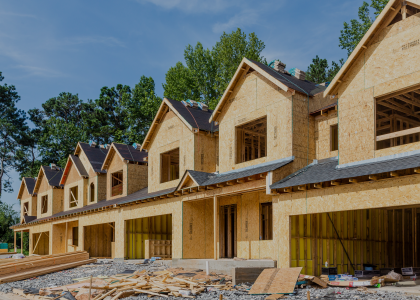President Trump’s position on clean energy has deviated from his predecessor’s, and the new political climate raises questions about how clean energy investment will fare in the future. After 100 days of the Trump administration, there is still some uncertainty, but one big opportunity.
Infrastructure improvement, an idea championed by the current administration and an area of historical bipartisanship, is an opportunity for energy efficiency at the federal level. The president has signaled that a trillion-dollar infrastructure plan may be ready within the next few weeks, potentially putting a dent in an estimated $4.5 trillion need.
Energy efficiency can play a crucial and complementary role. It reduces the cost of infrastructure, which in turn reduces energy waste. Efficiency improvements in residential and commercial buildings reduce infrastructure investment costs by deferring upgrades for utility transmission and distribution. Financing infrastructure improvements such as grid modernization reduces energy waste.
So how do we secure financing for both? Because cost is a major hurdle, the new administration has suggested public-private partnerships as a way to stretch taxpayer dollars. Although the exact nature of the partnerships is still up for debate, entities such as green banks are examples of how to successfully supplement public funds with private capital to complete projects. Additionally, previous iterations of President Trump’s plan included increasing the size of state revolving loan funds, another investment vehicle that can be used to leverage public funds for energy efficiency. For instance, revolving loan funds in Nebraska and Texas are hundred-million-dollar success stories despite the policy changes of five different US presidents.
At our upcoming Energy Efficiency Finance Forum, we’ll discuss these possibilities and other successful collaborations between the public and private sectors. They include Community Development Financial Institutions (CDFIs) and Property Assessed Clean Energy (PACE). This week, Orlando Mayor Buddy Dyer credited PACE for part of his city’s improved score in ACEEE’s new City Energy Efficiency Scorecard. “Through collaborations with our business, nonprofit, and academic community,” Dyer said, Orlando enabled PACE financing, which “unlocked more than $500M for residential and commercial property owners.”
Such financing can offer consumers and the government both lower energy bills and improved infrastructure.
At our forum, industry experts, corporations, green banks, foundations, and state officials will describe their vision for the future. They will talk about infrastructure, resilience, public-private partnerships, and new financing strategies. Curious how philanthropic investments can unlock other sources of capital? We’ll explore that topic with a panel of impact investing experts from the Kresge, MacArthur, and Surdna Foundations. If you want to know what the future of clean energy looks like, you will get a glimpse at Finance Forum, May 21-23 in Chicago.


